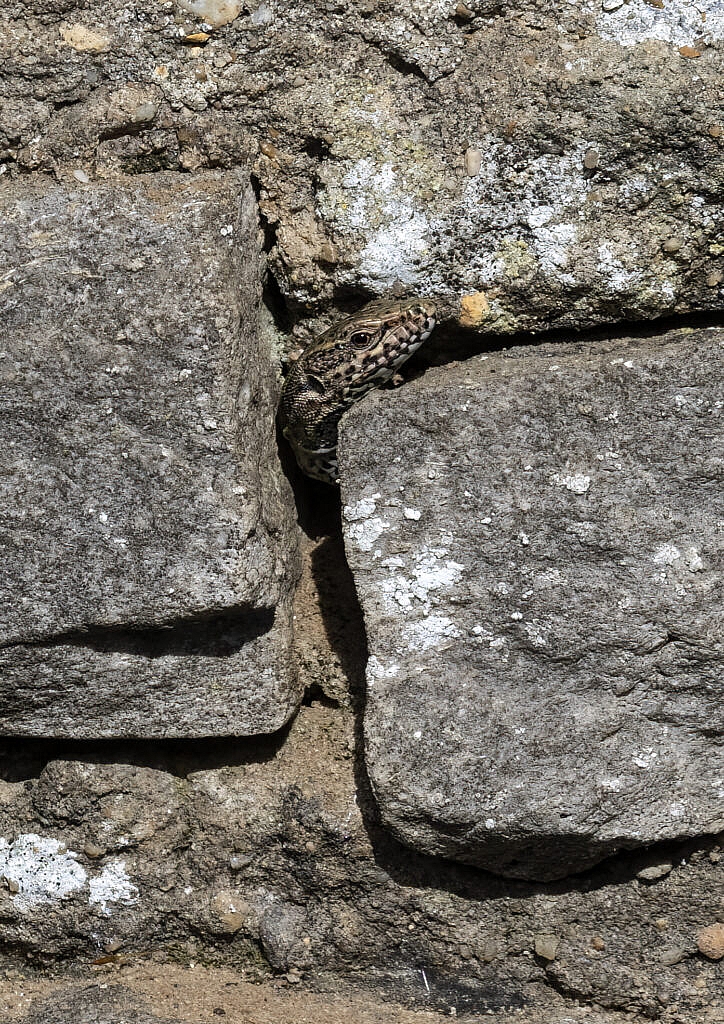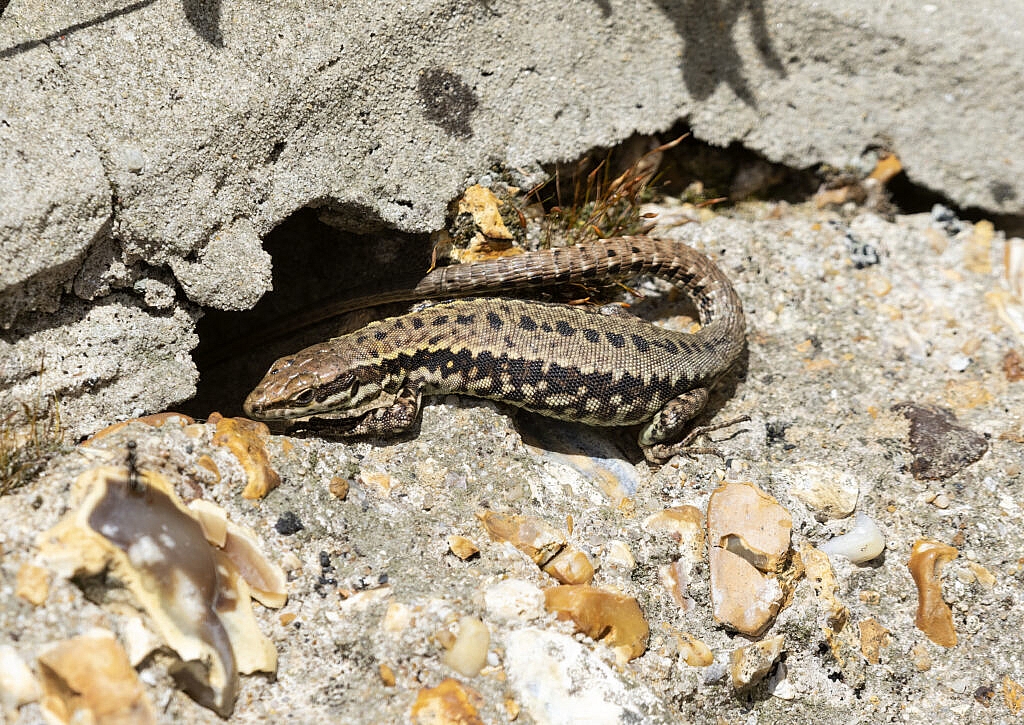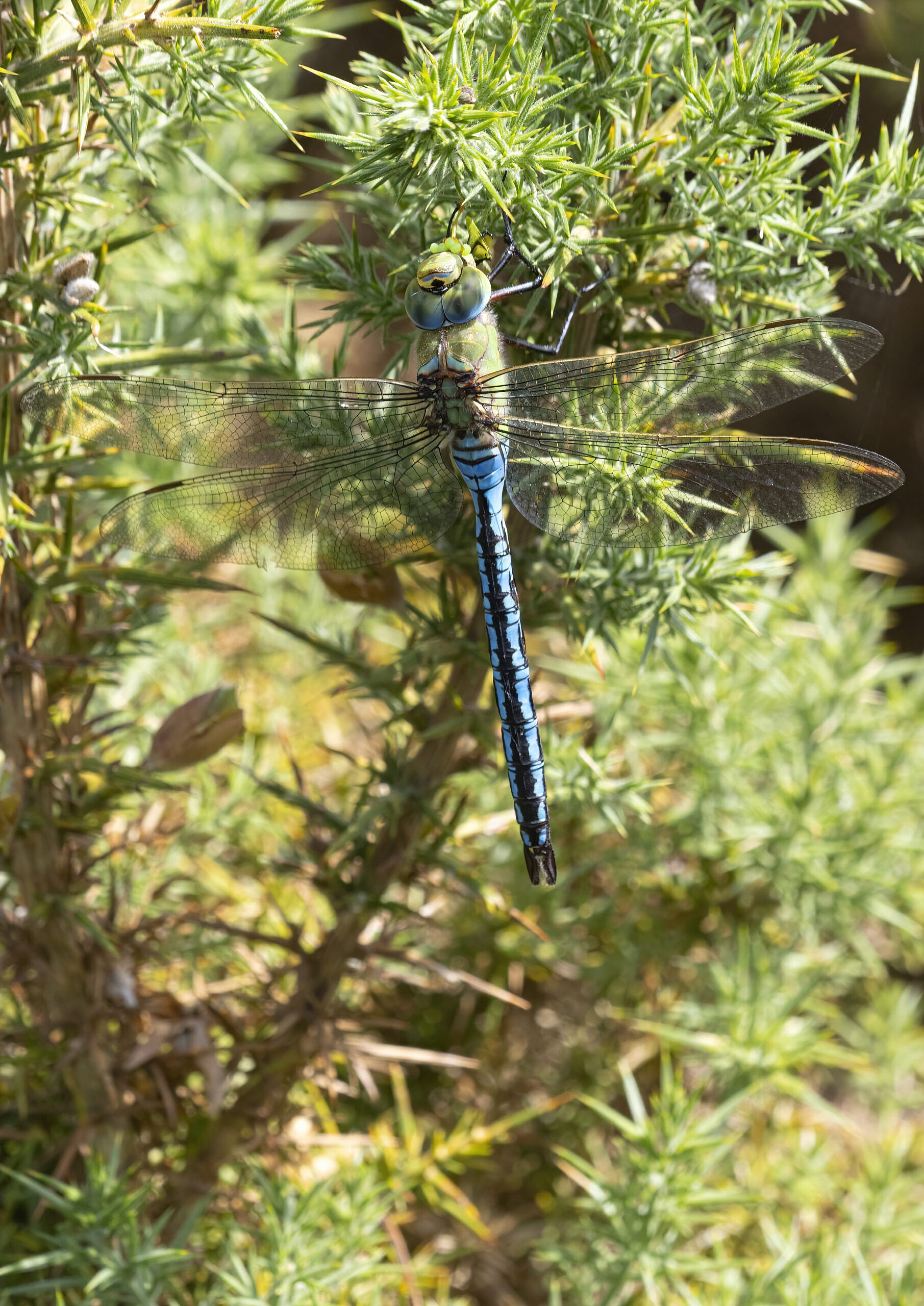I went on a trip to Bournemouth. It’s a long drive from home, something that I always think twice about doing these days. But I wanted to try and see a rare and exotic species of lizard for an upcoming book.
It’s Bournemouth. Miles of archetypal golden sands and rolling surf. It’s even sunny. As long as you sheltered from the cool 8°C winds and ignored the typically British mix of flip-flops and goose down jackets, you could almost be in the Med. But while I could see British grit and determination in the clenched jaws of those who refused to admit that sunny and warm aren’t necessarily the same thing, I didn’t see the lizard I was looking for. I scoured the cliffs for five hours with not so much of a flick of a tail. The green lizard is – or was – Britain’s largest lizard, growing up to 40cm (yes, you did read that correctly) long. That’s about 18 inches. It’s believed the Bournemouth colony was started by an illegal release by a collector, probably as far back as the 1970s. DNA analysis suggests that the lizards came from the border regions of Italy and Slovenia. For decades the colony flourished and slowly spread along the fast eroding cliffs before coming to public attention. Ironically it was just as naturalists were reacting with alarm to the presence of these alien lizards, which seemed to be displacing the native common lizard and threatening a nearby colony of the highly endangered native sand lizard, that Bournemouth Council, knowing a tourist attraction when they saw one, started advertising the presence of the lizards to the public. Fortunately for the visiting public, plans to try and eradicate the lizard came to nothing as the cliffs at Bournemouth are steep and crumbling, far too dangerous for an attempt to comb them looking for a lizard which likes to hide in deep cover.
But then, for reasons not fully understood, the colony seems to have started to decline. It’s a pattern seen before – a colony on the Isle of Wight lasted for 37 years before finally fading away. The reasons for the decline of the Bournemouth lizards are not understood. It may be that the very climate change which helped the lizards survive the British winter, started to produce greyer, wetter springs that have delayed the emergence of insects, slugs and worms that the lizards prey on. But in an ironic plot twist, the lizard may have fallen foul of collectors. Western green lizards are valuable. No longer generally available for sale in the UK they are prized by reptile collectors, and worth perhaps £50 each. See the cliffs of Bournemouth as littered with mobile £50 notes, and you start to understand why the animals may have vanished. So it seems that I was just too late to see the Western Green Lizard – which isn’t to say that there aren’t any, but several hours of patient searching by someone with experience didn’t find one.
But that doesn’t mean I didn’t see lizards. I saw plenty of them, but not the ones you might expect to see. Britain’s commonest lizard is – wait for it, this will knock your socks off – the ‘common lizard’. But in Bournemouth it’s decidedly uncommon. What you will see – and you will see plenty if you walk the cliff tops and head down the walkways to the sea – is another non-native, alien lizard, the ‘Wall lizard’. It’s a little longer than the common lizard, with a thinner , longer neck and a longer skinnier tail.

The effect is more dune buggy to the common lizard’s quad bike. It’s a Mediterranean species being found increasingly around Britain, usually but not exclusively near seaports. It’s a world-class stowaway on ships, being very capable of hiding away in tiny spaces. I’ve seen a wall lizard disappear into a crack you wouldn’t have thought you could get a pencil into, which means it is well-equipped to sneak into shipping containers. And when you consider that the UK handled around 23 million shipping containers in 2020, you can start to see just how easy it is for the wall lizard to get here. As I turned out, while I was photographing wall lizards in Bournemouth, another friend of mine was photographing them much closer to my home, in Bristol. A few days after that, I saw pictures taken just twenty miles from my home. All of which makes my 5 hour round trip to Bournemouth seem pretty pointless. But then again, I did manage to see a bloke in shorts. In Britain. In April. Now that’s what I call an endangered species.





Social Profiles